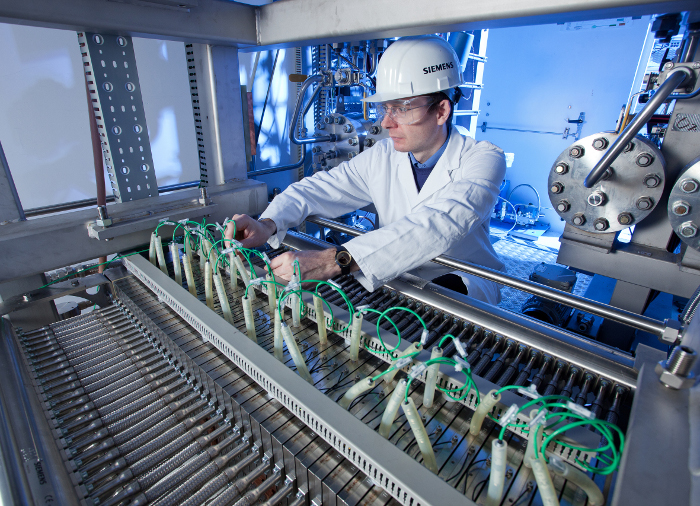Researchers from Shenzhen University and Nanjing Tech University in China have developed a seawater electrolysis system (SES) for the direct electrolysis of seawater, without side reactions or corrosion.
The new method works via self-driven water migration to sidestep the need for a separate desalination process. The energy consumption is purportedly comparable to that of industrial alkaline electrolysis with pure water.
To develop the lab-scale electrolyzer, the scientists separated the two electrode layers with a diaphragm layer and then submerged them in a concentrated hydroxide (OH−) solution – the SDE. They placed a polytetrafluoroethylene (PTFE) membrane between the seawater and the SDE. They claim this design allows the biased diffusion of water vapor, but fully prevents the penetration of liquid seawater and impurity ions such as magnesium, chloride and sulfate.
“During operation, the difference in water vapor pressure between the seawater and the SDE across the membrane provides a driving force for spontaneous seawater gasification (evaporation) at the seawater side and the diffusion of water vapor through the short gas path inside the membrane to the SDE side, where it is re-liquified by absorption by the SDE,” the scientist explained.
The consumption of water in the SDE during electrolysis maintains the pressure difference across the membrane, ensuring the continuous entry of freshwater, without extra energy consumption.
“When the water migration rate equals the electrolysis rate, a new thermodynamic equilibrium is established between the seawater and the SDE, and continuous and stable water migration through a ‘liquid-gas-liquid’ mechanism is realized to provide fresh water for electrolysis,” the researchers said.
The lab-scale electrolyzer steadily produced hydrogen from seawater for more than 72 hours, with average voltages of approximately 1.95 V and 2.3 V at current densities of 250 mA cm−2 and 400 mA cm−2, respectively. After 72 hours, the concentrations of chloride, sulfate, and magnesium impurities were only 0.008%, 0.052%, and 0.089% of the original.
“Calculations show that the electricity expense of [hydrogen] production is approximately 4.6 kWh Nm-3H2 and 5.3 kWh Nm-3H2 at current densities of 250 mA cm−2 and 400 mA cm−2, respectively, which is comparable to that of industrial alkaline electrolysis with pure water,” the scientists claimed.
To prove the concept, they fabricated a scaled-up SES measuring 82 cm x 62 cm x 70.5 cm. It reportedly exhibited stable performance for more than 3,200 hours and energy consumption of approximately 5.0 kWh Nm-3H2, with no detectable increase in impurity ions.
The scientists said their method can be further developed by using other electrolytes able to absorb water vapor and conduct ions, or high-performance electrocatalysts able to operate in the SDE environment. They added that the strategy could be applied to other non-volatile liquids like highly concentrated acid, alkali and salt solutions for use in industrial wastewater treatment.
In addition, it could be used to produce hydrogen while recovering useful resources such as lithium from water. Further research is also needed for the electrolyzer's compatibility with renewable energy sources to match that of conventional electrolyzers.
The scientists shared their findings in “A membrane-based seawater electrolyser for hydrogen generation,” which was recently published in Nature.
This content is protected by copyright and may not be reused. If you want to cooperate with us and would like to reuse some of our content, please contact: editors@pv-magazine.com.



Great work.
Keep it up.
Robert Klein
In this article where the quoted units are
“4.6 kWh Nm-3H2” what is “N”? I doubt whether it is newton, although the Nm might suggest newton-metres of torque .. but this doesn’t really fit in with the energy comparison.
kWh N/m³/H2 ?? Per cubic metre of hydrogen H2 ??
Rodney King
N in that context means ‘normal’ conditions. Here is an extract from engineering toolbox website.
NTP – Normal Temperature and Pressure – is defined as air at 20oC (293.15 K, 68oF) and 1 atm (101.325 kN/m2, 101.325 kPa, 14.7 psia, 0 psig, 29.92 in Hg, 407 in H2O, 760 torr). Density 1.204 kg/m3 (0.075 pounds per cubic foot)
The N stands for Normal conditions, ie measured at 15 oC and 1 bar